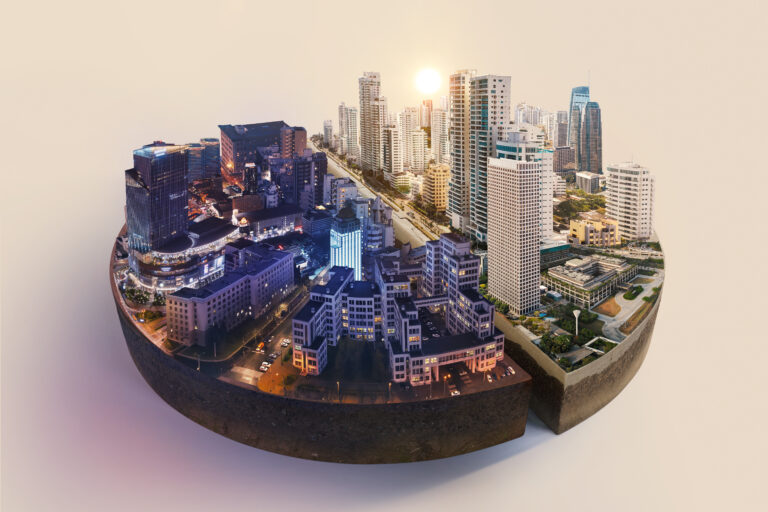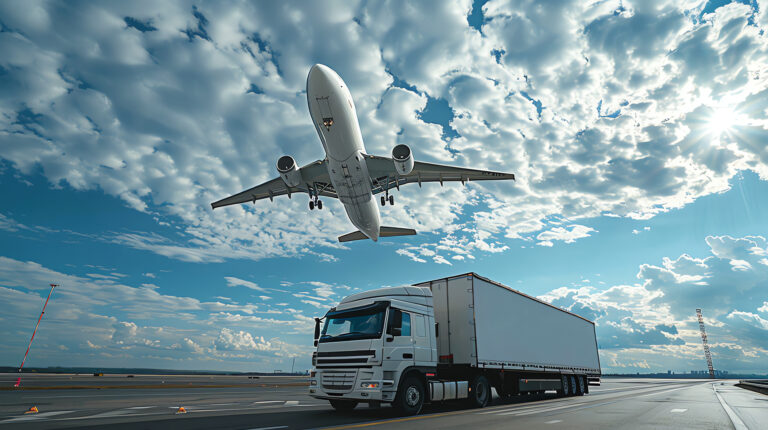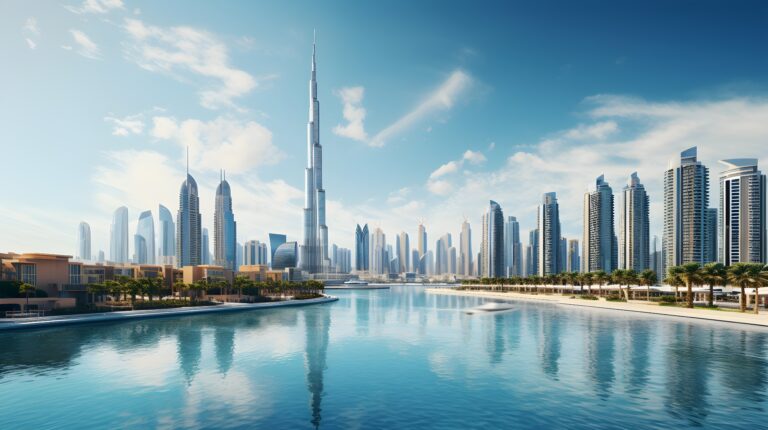Business In Dubai

The corporate world, sometimes referred to as the business sector, includes a broad range of sectors, such as manufacturing, retail, healthcare, technology, finance, and more. It includes companies of all sizes that operate in regional, national, and worldwide markets, ranging from tiny startups to massive multinational conglomerates. The industry is the backbone of contemporary economies around the globe, contributing significantly to economic growth, innovation, and job creation.
Emerging Trends in Business
1. Digital Transformation: Digital transformation is transforming business processes, customer relationships, and industry landscapes across multiple sectors. Businesses are using digital technologies like cloud computing, artificial intelligence, big data analytics, and the Internet of Things (IoT) to increase efficiency, agility, and innovation. From e-commerce and online banking to telemedicine and remote employment, digitalization is transforming how businesses function and provide value to their customers.
2. Sustainability and Corporate Social Responsibility (CSR): Sustainability and Corporate Social Responsibility (CSR) are increasingly integrated into company strategy due to growing awareness of environmental, social, and governance (ESG) issues among stakeholders. Businesses are implementing sustainable practices, lowering their carbon footprints, and sponsoring social activities to combat climate change, diversity and inclusion, and community development. Sustainable business practices not only help to achieve environmental and social objectives, but they also improve brand reputation, attract investors, and drive long-term financial performance.
3. Models of Remote and Hybrid Work: The COVID-19 pandemic has caused a shift in traditional office-based work cultures by hastening the adoption of remote work and hybrid work modes. To assist distributed teams and remote workers, businesses are adopting flexible work arrangements, digital communication tools, and remote productivity solutions. Combining remote and in-person work, hybrid work models are becoming a more adaptable and sustainable way to meet the needs of a wide range of employee preferences while increasing operational effectiveness.
4. Retail Omnichannel and E-Commerce: E-commerce is still growing at a very fast rate thanks to shifting consumer habits, technology improvements, and the rise of online marketplaces. To reach customers across channels and geographies, businesses are investing in digital marketing tactics, online marketplaces, and e-commerce platforms. Delivering seamless shopping experiences and increasing customer engagement and loyalty need omnichannel retail strategies, which integrate online and offline sales channels.
Business Strategies and Best Practices
1. Adaptive and Agile Leadership: Agile and adaptable leadership is crucial for promoting organizational change and innovation in the fast-paced, uncertain business climate of today. In order to enable teams to adjust to changing market conditions and client demands, leaders must be proactive, adaptable, and willing to try new things. Agile leaders are characterized by their ability to communicate effectively, have a clear strategic vision, and possess emotional intelligence. They also build trust, encourage teamwork, and adeptly handle difficult situations.
2. Experience Design and Customer-Centricity: Effective business strategies prioritize client-centricity, which highlights the need of comprehending and fulfilling customer requirements and preferences. To provide great customer experiences across touchpoints, businesses are implementing design thinking principles, customer journey mapping, and voice of the customer feedback. Customer happiness and loyalty are largely influenced by personalization, responsiveness, and empathy. These factors help firms establish strong brand connections and promote long-term growth.
3. Ingenuity & Originality: In the corporate world, uniqueness and inventiveness serve as competitive advantages and differentiators. In order to propel product creation, process optimization, and market disruption, businesses are cultivating cultures of innovation, experimentation, and continuous learning. Open innovation models, design sprints, and cross-functional cooperation are helping companies to use different viewpoints and seize fresh chances for expansion and value generation.
4. Alliances and Strategic Partnerships: For companies looking to increase market share, gain access to new resources, and spur innovation, strategic alliances and partnerships are essential. To take advantage of synergies and generate shared value, companies are developing ecosystem partnerships, joint ventures, and strategic alliances with complementary organizations. Businesses may pool resources, share risks, and take advantage of emerging market opportunities more successfully through collaborative partnerships than they could on their own.
5. Employee Engagement and Talent Development: The development of talent and employee engagement are essential factors that influence an organization’s competitiveness and performance. To develop talent and promote a culture of ongoing learning and development, businesses are spending money on leadership development, staff training, and upskilling programs. In today’s competitive labor market, employee engagement initiatives—such as wellness programs, flexible work schedules, and recognition programs—are critical to luring, keeping, and inspiring top talent.
The business sector is rapidly evolving due to global trends, shifting behavior among consumers, and technology improvements. Businesses need to prioritize people development, sustainability, and customer-centricity while embracing innovation, agility, and resilience in order to thrive in this dynamic world. Businesses can successfully manage the intricacies of the business sector and seize possibilities for growth and success in a constantly changing marketplace by implementing best practices, utilizing emerging trends, and adopting forward-thinking tactics.
Technology and Innovation

In today’s globalized world, innovation and technology serve as drivers for growth and development. Innovation is the process of developing and implementing novel concepts, procedures, and goods to meet unmet demands, resolve difficult problems, and promote economic expansion. Innovation is facilitated by technology, which offers the means, venues, and capacities to bring concepts to life and open up new avenues for human pursuit.
Key Trends in Technology and Innovation
1. Machine learning and artificial intelligence (AI): By enabling computers to carry out tasks like pattern recognition, language processing, and decision-making that traditionally require human intelligence, artificial intelligence (AI) and machine learning are transforming a number of industries. Healthcare, banking, manufacturing, and transportation are all being revolutionized by AI-powered applications that are increasing productivity, accuracy, and automation throughout workflows and processes.
2. Distributed ledger technology (DLT) and blockchain: Decentralized, transparent, and secure platforms are provided by blockchain and DLT for the purpose of recording and validating data exchanges and transactions. Beyond cryptocurrency, blockchain technologies are being used to reduce reliance on middlemen and enable trustless interactions in supply chain management, digital identity verification, smart contracts, and decentralized finance.
3. Interconnected Devices and the Internet of Things (IoT): The Internet of Things (IoT) is a network of networked sensors, devices, and systems that gather, share, and process data to facilitate automation and intelligent decision-making. IoT technologies are enabling real-time monitoring, predictive maintenance, and personalized experiences, which are revolutionizing industries like manufacturing, healthcare, agriculture, and energy.
4. Next-Generation Connectivity and 5G: Ultra-fast, low-latency connectivity is what 5G technology promises to bring about, opening up new avenues for creativity, cooperation, and communication. In addition to offering faster download rates, 5G networks will make it possible for new applications like remote healthcare, augmented reality (VR), and autonomous cars. These applications will completely change the way we work, live, and interact with the environment.
5. Life Sciences and Biotechnology: Technological developments in biotechnology and life sciences are propelling innovations in environmental sustainability, healthcare, and agriculture. Biotechnology is redefining how we manage healthcare issues, improve crop yields, and lessen the effects of climate change. Examples of these innovations include gene editing, personalized medicine, synthetic biology, and sustainable food production.
Impact of Technology and Innovation Across Industries
1. Medical and biological sciences: Innovation and technology are transforming healthcare diagnosis, treatment, and delivery, improving patient outcomes, care access, and cost effectiveness. The delivery of healthcare services is being revolutionized by telemedicine, wearable technology, precision medicine, and AI-powered diagnostics. These innovations are personalizing care and tailoring it to the requirements of individual patients.
2. Fintech and finance: Greater access, transparency, and efficiency are being made possible in the finance sector by technology and innovation that are upending traditional banking and financial services. In order to provide cutting-edge solutions like digital payments, peer-to-peer lending, robot-advisors, and decentralized finance, fintech businesses are utilizing blockchain, artificial intelligence (AI), and mobile technology. This is expanding access to financial services and promoting financial inclusion.
3. E-commerce and retail: The distinction between online and offline purchasing experiences is becoming more hazy due to e-commerce and digital technology. Augmented reality (AR) try-on experiences, AI-driven personalization, and frictionless checkout processes are increasing consumer engagement and boosting revenues in e-commerce platforms. Customers now enjoy greater flexibility and convenience in making purchases because to omnichannel retail tactics, which facilitate seamless integration across digital and physical channels.
4. Power and Ecological Balance: Technology and innovation are driving decarbonization, environmental measures, and the shift to renewable energy sources in the energy sector. The generation, distribution, and consumption of energy are changing due to the usage of solar and wind power, energy storage devices, smart grids, and electric vehicles (EVs). This is lowering greenhouse gas emissions and lessening the effects of climate change.
Challenges and Opportunities in Technology and Innovation
1. Regulatory and Ethical Considerations: The significance of ethical and regulatory considerations grows with the advancement of technology. To guarantee that technology is used morally and responsibly for the good of society, issues like data privacy, algorithmic bias, cybersecurity, and responsible AI require rigorous thought and oversight.
2. Digital Gap and Technology Access: Ensuring equitable access to the advantages of innovation is still hampered by the digital divide, or the difference in access to technology between those who do and do not. To guarantee that all people and communities can take part in the digital economy, bridging the digital gap necessitates investments in digital infrastructure, digital literacy initiatives, and inclusive technology design.
3. Talent and Skill Disparity: The workforce is seeing a demand for new skills and abilities due to the rapid rate of technological change. Companies and academic institutions need to work together to offer chances for upskilling, reskilling, and training that will give employees the skills they need to succeed in a technologically advanced economy.
4. Risks to Cybersecurity and Data Privacy: In an increasingly linked world, businesses, governments, and individuals face serious dangers from cybersecurity threats and data breaches. To defend against cyberattacks and secure sensitive data, businesses need to make significant investments in strong cybersecurity procedures, personnel training, and incident response capabilities.
Innovation and technology are altering economies, society, and industries, fostering sustainability, prosperity, and development. Businesses and organizations may leverage the transformative power of technology to build a better future for everybody by embracing emerging technologies, fostering an innovation culture, and resolving ethical, regulatory, and societal concerns.
Real State Sector

Dubai is famous overall for its dynamic land area, described by notorious high rises, sumptuous private networks, cutting edge business improvements, and a-list friendliness contributions. With its essential area, business-accommodating climate, and visionary metropolitan preparation, Dubai has arisen as a worldwide center for land venture, drawing in financial backers, engineers, and occupants from around the world. In this aide, we’ll dig into the different aspects of Dubai’s roaring land area, including private, business, and accommodation properties.
Residential Properties
1. Luxury Villas and Apartments: Dubai has an unrivalled assortment of luxury villas and apartments to suit the sophisticated tastes of wealthy individuals and families. From beachfront mansions on the Palm Jumeirah to penthouse apartments in Downtown Dubai, luxury residential properties in Dubai are synonymous with opulence, refinement, and exclusivity. These residences are in high demand among affluent buyers and investors because they offer world-class amenities, spectacular views, and unrivalled lifestyle experiences.
2. Gated communities and master-planned developments: Dubai is home to various gated communities and master-planned buildings, which provide a mix of villas, townhouses, and flats inside carefully controlled areas. Residents in developments like as Emirates Hills, Arabian Ranches, and Jumeirah Golf Estates enjoy a luxury and safe living environment equipped with landscaped gardens, recreational facilities, and community amenities. These residential enclaves represent the pinnacle of affluent living in Dubai, combining peace, privacy, and convenience for its occupants.
Commercial Properties
1. Grade A office spaces: Dubai’s commercial real estate market offers a varied choice of Grade A office spaces to meet the needs of international enterprises, financial institutions, and start-ups. Dubai International Financial Centre (DIFC), Dubai Marina, and Business Bay are examples of modern business districts that provide cutting-edge office towers, working spaces, and serviced offices. These prominent locations serve as business and innovation hubs, encouraging firms to collaborate, network, and flourish.
2. Retail and Mixed-Use Development: Dubai’s retail industry is built on prominent shopping malls, lifestyle destinations, and mixed-use buildings that provide a variety of retail, dining, entertainment, and leisure experiences. Dubai’s retail scene is synonymous with luxury, diversity, and innovation, featuring the world’s largest mall, The Dubai Mall, as well as upmarket shopping locations like Mall of the Emirates and City Walk. Mixed-use buildings, such as Dubai Marina Walk and JBR The Walk, blend retail stores, waterfront promenades, and residential units to create dynamic urban settings for both residents and visitors.
Hospitality Properties
2. Serviced Apartments and Boutique Hotels: In addition to luxury hotels and resorts, Dubai has a broad choice of serviced apartments and boutique hotels to suit different visitor interests and budgets. Serviced apartment complexes like The Address Dubai Marina and Grosvenor House Apartments provide guests spacious and completely furnished apartments, as well as hotel-style amenities and services. Boutique hotels in areas such as the Al Fahidi Historic District and Jumeirah Beach Residence provide intimate and unique experiences that represent Dubai’s rich history, legacy, and hospitality.
Dubai’s real estate market continues to prosper, thanks to robust demand, imaginative development projects, and savvy investments in residential, commercial, and hospitality buildings. Dubai’s reputation as a global business and tourism hub continues to attract real estate investors, developers, and inhabitants looking for luxury, opportunity, and innovation. As the city evolves and expands, the future of Dubai’s real estate sector seems optimistic, with ongoing growth, sustainability, and prosperity for all stakeholders.
Transportation And Logistics Sector

Dubai’s strategic location at the crossroads of East and West, combined with its world-class infrastructure and business-friendly atmosphere, has established it as a key transit and logistics hub in the Middle East and elsewhere. With cutting-edge ports, award-winning airports, and innovative cargo services, Dubai is a key player in promoting global trade, connectivity, and economic progress. In this tutorial, we’ll look at the most important aspects of Dubai’s transport and logistics sector, as well as its global significance.
Ports and Maritime Infrastructure
1. Jebel Ali Port: Jebel Ali Port is one of the world’s largest and busiest ports, serving as an important gateway for trade between the East and West. Jebel Ali Port, located strategically along the Arabian Gulf’s busiest shipping routes, provides deep-water berths, modern container terminals, and cutting-edge cargo handling capabilities. The port is managed by DP World, a worldwide port management company, and acts as an important transshipment facility for commodities bound for markets in the Middle East, Africa, and South Asia.
2. Port Rashid: Port Rashid is another important marine facility in Dubai, which focuses in cruise tourism, general cargo, and maritime services. The port has contemporary terminals, specific cruise terminals, and a variety of support services for ships of all sizes. Port Rashid is critical to marketing Dubai as a premier cruise destination in the region, receiving millions of passengers and crew members each year and contributing significantly to the city’s tourist and hospitality sectors.
Airports and Aviation Infrastructure
1. Dubai International Airport(DXB): Dubai International Airport is one of the world’s busiest and most recognizable airports, acting as the principal entrance to Dubai and the surrounding region. Every year, DXB handles millions of passengers and cargo shipments because to its cutting-edge facilities, several passenger terminals, and broad airline network. The airport is a major international travel hub, connecting people from all over the world to destinations in Asia, Europe, Africa, and the Americas.
2. The Al Maktoum International Airport (DWC): Al Maktoum International Airport, commonly known as Dubai World Central (DWC), is a massive aviation project that aims to supplement Dubai International Airport and facilitate future expansion in air travel and freight operations. Located in Jebel Ali, DWC is one of the world’s largest cargo terminals, capable of handling millions of tons of freight each year. The airport is positioned to become a significant focused for air freight, logistics, and e-commerce, meeting the changing needs of global supply chains.
Cargo Services and Logistics
1. Dubai Cargo Village: Dubai Cargo Village is a major logistics facility close to Dubai International Airport that provides a wide range of cargo handling, storage, and distribution services. The site includes sophisticated warehouses, temperature-controlled storage facilities, and cutting-edge logistics solutions to fulfil the diversified demands of enterprises across industries. Dubai Cargo Village is crucial to the efficient transportation of products and commodities into and out of Dubai, enabling trade flows and supply chain operations.
2. Dubai Logistics City: Dubai Logistics City is a significant logistics central located near Al Maktoum International Airport that includes a large logistics park, warehousing facilities, and integrated logistics services. The logistics city acts as a single focused for distribution, fulfilment, and value-added logistics activities, meeting the demands of manufacturers, retailers, and e-commerce enterprises. Dubai Logistics City’s closeness to important transportation hubs and superior infrastructure allows firms to streamline supply chain operations and improve productivity.
Dubai’s transport and logistics sector is critical to promoting global economic growth, trade, and connectivity. Dubai is a gateway between East and West, with world-class ports, airports, and cargo services that facilitate the movement of goods, persons, and investments across continents. As Dubai invests in infrastructure, innovation, and sustainability, the city’s position as a transport and logistics hub is expected to increase, creating new opportunities for businesses, investors, and stakeholders.
Tourism and Hospitality Sector

Dubai’s tourism industry is well-known globally for its famous landmarks, elegant lodgings, world-class retail complexes, and dynamic cultural attractions. Dubai’s unique blend of modernity and history provides guests with an unrivalled level of luxury, diversity, and hospitality. In this guide, we’ll look at Dubai’s tourism and hospitality features, such as attractions, luxury hotels, shopping complexes, and cultural places.
Attractions
1. The Burj Khalifa: The Burj Khalifa, the world’s tallest building, dominates Dubai’s skyline with its breathtaking height and architectural beauty. The observation decks on the 124th and 148th floors offer panoramic views of the cityscape, desert, and coastline. The Burj Khalifa also includes fine dining restaurants, luxurious residences, and the awe-inspiring Dubai Fountain, which displays stunning water and light shows against the tower’s backdrop.
2. The Dubai Mall: The Dubai Mall is the world’s largest shopping mall, providing an unrivalled retail and entertainment experience to visitors of all ages. With over 1,200 retail establishments, including flagship stores, luxury boutiques, and worldwide brands, the mall is a shopper’s dream. In addition to shopping, guests may visit world-class attractions including the Dubai Aquarium & Underwater Zoo, Dubai Ice Rink, and VR Park Dubai, as well as a variety of dining and entertainment options.
3. Palm Jumeirah: Palm Jumeirah is a famous man-made island built like a palm tree, famed for its opulent resorts, immaculate beaches, and luxury homes. Visitors can visit attractions such as Atlantis, The Palm, a vast resort with a water park, aquarium, and marine habitat, as well as beach clubs, spas, and fine dining restaurants. The Palm Jumeirah provides a serene refuge from the hustle and bustle of the city the heart, offering the ideal balance of relaxation and indulgence for guests seeking elegance and serenity.
Luxury Hotels
1. Burj Al Arab: Burj Al Arab is one of the world’s most famous luxury hotels, known for its distinctive sail-shaped construction, lavish décor, and unrivalled service. The hotel, located on its own private island, offers luxurious suites, personalized butler service, and stunning views of the Arabian Gulf. The Burj Al Arab boasts a variety of fine dining restaurants, including the renowned Al Muntaha is the place, as well as exquisite amenities like the Talisa Spa and infinity pool.
2. Jumeirah Beach Hotel: The Jumeirah Beach Hotel is a luxurious beachfront resort recognized for its wave-inspired architecture, breathtaking sea views, and family-friendly services. The hotel has big rooms and suites, multiple swimming pools, a private beach, and a variety of recreational facilities, including water sports, tennis courts, and a cutting-edge fitness focused. Guests can enjoy world-class dining experiences at landmark restaurants including Beachcombers, Villa Beach, and Pier chic, which serve a variety of cuisines and provide breathtaking views.
Cultural Sites
1. Al Fahidi Historic District: Al Fahidi mediaeval District, also known as the district of Al Bastakiya, is one of Dubai’s oldest communities, with typical Arabian architecture, narrow alleyways, and mediaeval wind tower residences. Visitors can visit the district’s museums, art galleries, and cultural locations, including the Dubai Museum, which is housed within Al Fahidi Fort and exhibits the city’s rich heritage and ancient riches. The surrounding area also holds cultural events, exhibitions, and walking tours that offer insight into Dubai’s past and present.
2. Dubai Opera: The Dubai Opera is a cutting-edge architectural wonder and cultural hub that presents a wide range of shows, concerts, and events all year long. The opera house, which is close to the Burj Khalifa and the Dubai Mall in Downtown Dubai, has an exquisite design that was influenced by classic Arabian sailing ships. Along with top-notch performances of everything from opera and ballet to theatre and music concerts, visitors can take advantage of workshops, art exhibits, and educational activities.
Visitors can enjoy a multitude of opulence, culture, and life-changing experiences in Dubai’s tourist and hospitality sectors, which include everything from renowned landmarks and five-star hotels to energetic retail centres and cultural attractions. Dubai’s dedication to innovation, quality, and hospitality keeps drawing visitors from all over the world who want to experience its wide range of activities and become fully immersed in its vibrant culture and way of life.
Medical Sector

To advance medical research, advance public health, and spur economic growth, the medical sector—which includes pharmaceuticals, medical devices, biotechnology, and other related industries—is essential. It is essential for tackling issues related to global health, boosting patient outcomes, and improving quality of life.
The State of Global Health
A complex web of interrelated elements, such as illness burden, healthcare inequities, and access to care, define the global health landscape. Socioeconomic, cultural, and environmental factors continue to have an impact on healthcare delivery and health outcomes inequalities, despite tremendous advancements in medical research and technology. A few more factors that add to the complexity of global health difficulties are emerging infectious diseases, changing demographics, and lifestyle-related health problems.
Emerging Trends in Healthcare
3. Analytics for Healthcare and Artificial Intelligence: Clinical decision-making, patient care, and administrative procedures are changing as a result of artificial intelligence (AI) and healthcare analytics. In order to produce insights, increase the accuracy of diagnoses, and forecast patient outcomes, artificial intelligence (AI) algorithms examine enormous volumes of healthcare data, including genomic, medical imaging, and electronic health records. Platforms for healthcare analytics make population health management, resource allocation, and performance monitoring possible, improving the quality of care provided and the effectiveness of operations.
4. Population Health and Value-Based Healthcare: Value-based care models have replaced fee-for-service approaches, placing an emphasis on patient satisfaction, quality, and outcomes rather than quantity of services rendered. Value-based care efforts aim to save healthcare costs and enhance population health by focusing on social determinants of health, chronic illness management, and preventative treatment. Population health management solutions aim to improve health outcomes for a variety of patient populations by utilizing data analytics, care coordination, and community partnerships.
5. Cybersecurity and Privacy in Healthcare: There are serious cybersecurity and privacy issues as a result of the growing digitization of healthcare systems and the widespread use of electronic health records. Cyberattacks, data breaches, and ransomware attacks can compromise patient confidentiality and interfere with clinical procedures in healthcare organizations. Encryption technology, strong cybersecurity safeguards, and regulatory compliance frameworks are necessary to protect patient data, preserve healthcare infrastructure, and uphold public confidence in the healthcare system.
Healthcare Strategies and Best Practices
1. Care and Experience Focused on the Patient: Patient-centered care puts the patient at the heart of the healthcare delivery process by promoting empathy, communication, and collaborative decision-making. In order to provide customized, culturally sensitive treatment, healthcare professionals make an effort to comprehend their patients’ preferences, values, and goals. In order to guarantee excellent patient experiences and improved clinical outcomes, patient experience efforts concentrate on increasing communication, cutting down on wait times, and improving information access.
2. Multidisciplinary Cooperation and Care Management: Delivering complete, coordinated treatment requires interdisciplinary teamwork amongst healthcare professionals, including doctors, nurses, chemists, and allied health practitioners. The goals of care coordination initiatives are to minimize medical errors, facilitate smooth transitions across sites of care, and maximize resource use. Team-based care models enhance patient outcomes and satisfaction by fostering cooperation, communication, and shared decision-making.
3. Medical Education and Ongoing Education: Continuing medical education and professional development are crucial for promoting lifetime learning, preserving clinical competency, and adjusting to changing medical procedures. To improve clinical skills, critical thinking, and evidence-based practice, healthcare professionals participate in ongoing learning activities such as peer cooperation, simulation training, and continuing medical education. To prepare future healthcare leaders for complex healthcare challenges, medical schools and training programs use competency-based curriculum and technology-enabled learning platforms.
4. Enhancing Healthcare Quality and Ensuring Patient Safety: The goals of quality improvement programs are to increase patient safety, lower medical errors, and streamline healthcare procedures. To track and assess the quality of care, healthcare organizations use clinical guidelines, evidence-based practices, and performance indicators. Patient safety efforts aim to reduce harm and foster a culture of safety within healthcare organizations by concentrating on medication safety, adverse event reporting, and error reduction.
5. Healthcare Financial Management and Sustainability: Effective financial management is crucial to the financial viability and sustainability of healthcare organizations. Healthcare leaders prioritize revenue cycle management, cost containment, and budget optimization methods in response to financial problems such as decreased reimbursement rates and escalating healthcare expenses. Financial planning, risk management, and strategic investments in technology and infrastructure are critical to long-term financial stability and resilience.
The medical industry is rapidly changing, owing to technological advancements, demographic shifts, and changing patient expectations. To effectively navigate the healthcare environment and handle global health concerns, healthcare organizations must embrace emerging trends, implement best practices, and prioritize patient-centered care, interdisciplinary collaboration, and continuous quality improvement. Healthcare organizations can improve patient outcomes, boost population health, and contribute to a better future for all by using digital health technologies, expanding precision medicine techniques, and cultivating an innovative and outstanding culture.